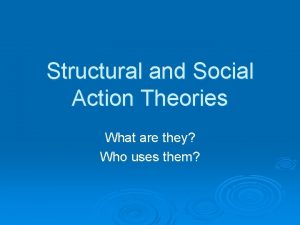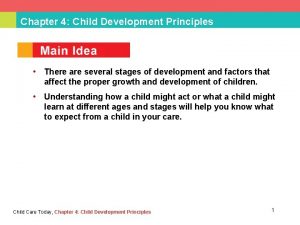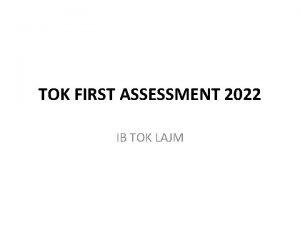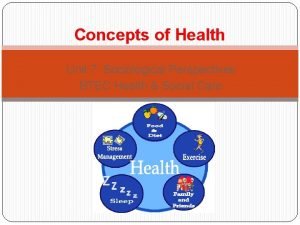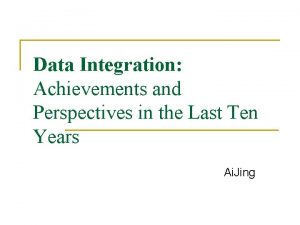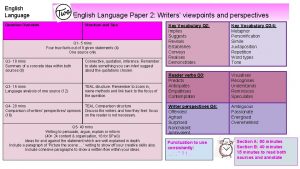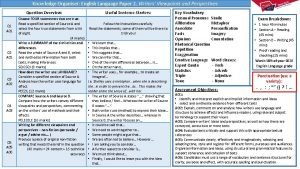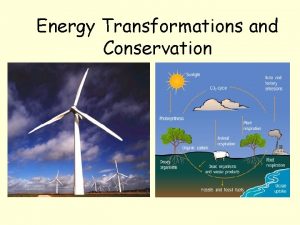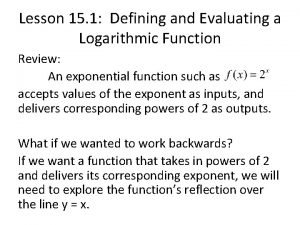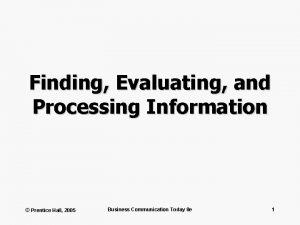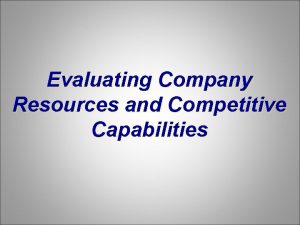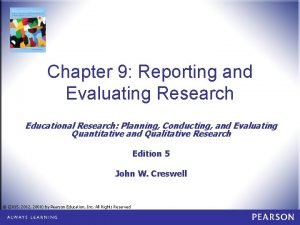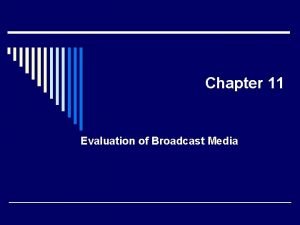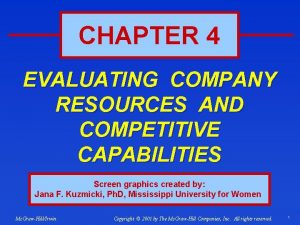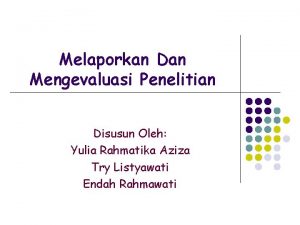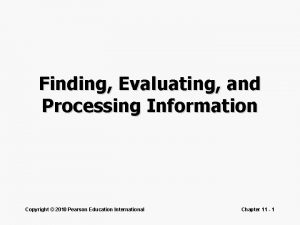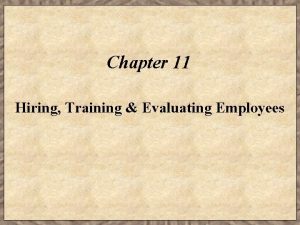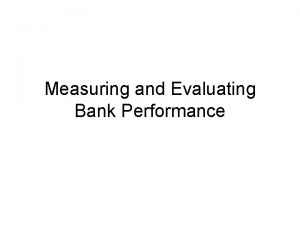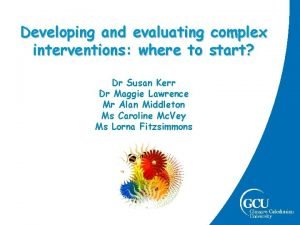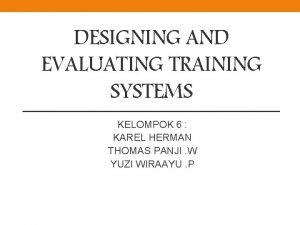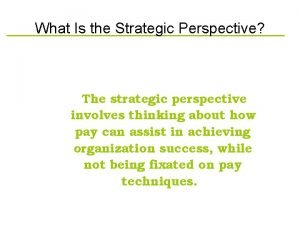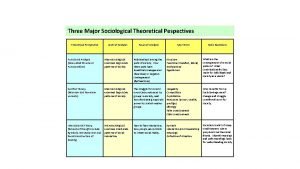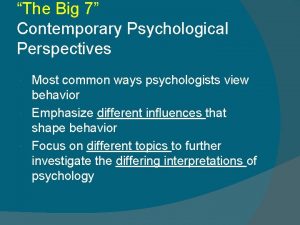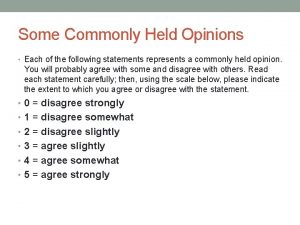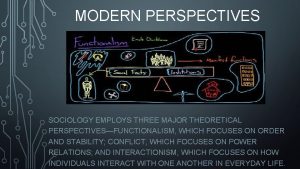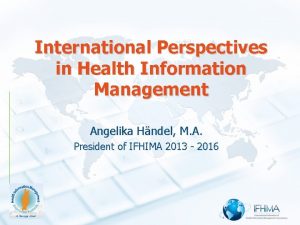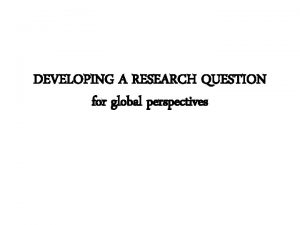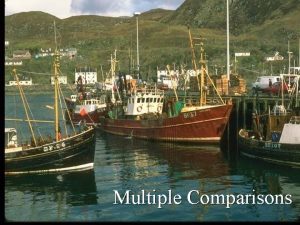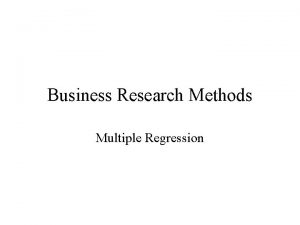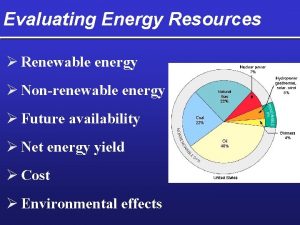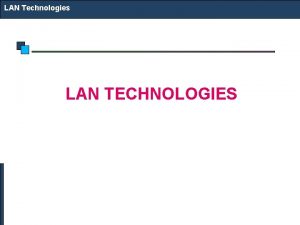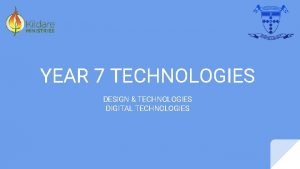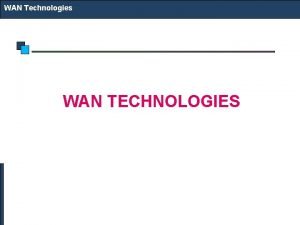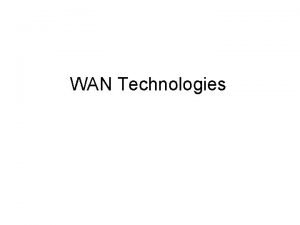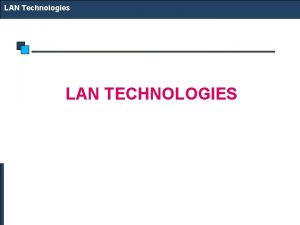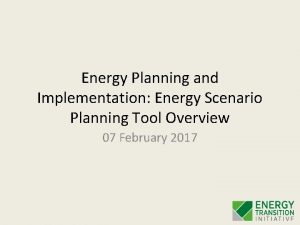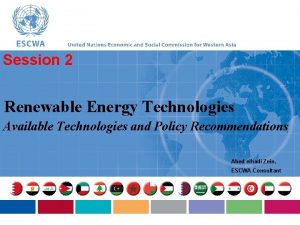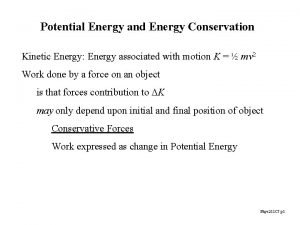Evaluating and Planning Energy Technologies through Multiple Perspectives






































































- Slides: 70

Evaluating and Planning Energy Technologies through Multiple Perspectives 1

Agenda • Introducing Multiple Perspectives for Energy – Hierarchical Decision Modeling • • • Regional Planning Incentive Planning Sector Planning National Planning Corporate Planning

Research Institute for Sustainable Energy (Directors Kocaoglu and Daim) Evaluation of Energy Technologies Technical • Power plant availability • Fuel availability • Efficiency • Capacity factor • Workforce availability Economic Environmental • Efficiency • Capital costs • Grid connection costs • Operational and maintenance costs • Fuel costs • Clean-up costs Technology-1 • Aesthetics • Air pollution • Soil contamination • Water pollution • Noise pollution • Smell Technology-2 Social • Aesthetics • Job creation • Public safety • Impact on lifestyle • Impact on public health Political • Energy security • Resource diversity • Regional/Global friction • Government incentives • Regulations Technology-3 3

Phase-1: Prioritization of Perspectives Evaluation of Energy Technologies pj Technical • Power plant availability • Fuel availability • Efficiency • Capacity factor • Workforce availability Economic Environmental • Efficiency • Capital costs • Grid connection costs • Operational and maintenance costs • Fuel costs • Clean-up costs Technology-1 • Aesthetics • Air pollution • Soil contamination • Water pollution • Noise pollution • Smell Technology-2 Social • Aesthetics • Job creation • Public safety • Impact on lifestyle • Impact on public health Political • Energy security • Resource diversity • Regional/Global friction • Government incentives • Regulations Technology-3 4

Phase-2: Evaluation of Criteria Evaluation of Energy Technologies Technical Economic Environmental Social Political cij • Power plant availability • Fuel availability • Efficiency • Capacity factor • Workforce availability • Efficiency • Capital costs • Grid connection costs • Operational and maintenance costs • Fuel costs • Clean-up costs Technology-1 • Aesthetics • Air pollution • Soil contamination • Water pollution • Noise pollution • Smell Technology-2 • Aesthetics • Job creation • Public safety • Impact on lifestyle • Impact on public health • Energy security • Resource diversity • Regional/Global friction • Government incentives • Regulations Technology-3 5

Phase-3: Characterization of Technologies Evaluation of Energy Technologies Technical • Power plant availability • Fuel availability • Efficiency • Capacity factor • Workforce availability Economic Environmental • Efficiency • Capital costs • Grid connection costs • Operational and maintenance costs • Fuel costs • Clean-up costs • Aesthetics • Air pollution • Soil contamination • Water pollution • Noise pollution • Smell Social • Aesthetics • Job creation • Public safety • Impact on lifestyle • Impact on public health Political • Energy security • Resource diversity • Regional/Global friction • Government incentives • Regulations Desirability Values dt, i(ci) Technology-1 Technology-2 Technology-3 6

Sample Desirability Functions 100 75 Relative Desirability 50 R&D Costs 25 0 0 50 100 1, 000 10, 000 $ Million 7

Sample Desirability Functions 100 Impact on Employee Health 75 Relative Desirability 50 25 0 Death Injury Sickness Neutral Impr High Extreme Impr. 8

Combination of Phases 1, 2 and 3 Technology Values Technical • Power plant availability • Fuel availability • Efficiency • Capacity factor • Workforce availability Evaluation of Energy Technologies Economic Environmental • Efficiency • Capital costs • Grid connection costs • Operational and maintenance costs • Fuel costs • Clean-up costs Technology-1 • Aesthetics • Air pollution • Soil contamination • Water pollution • Noise pollution • Smell Technology-2 Social • Aesthetics • Job creation • Public safety • Impact on lifestyle • Impact on public health Political • Energy security • Resource diversity • Regional/Global friction • Government incentives • Regulations Technology-3 9

Technology Value Using the following notation; TVt : Technology Value for Technology (t) dt, i (ci) : Desirability of the performance metric of Technology (t) with respect to Criterion (i) for all criteria i = 1, …. . , I cij : Relative Importance of Criterion i with respect to Perspective j for all criteria i = 1, …. , I and all perspectives j = 1, …. . , 5 pj : Relative priority of Perspective j 5 I TVt : ∑ ∑ pj x cij x dt, i (ci) j = 1 i = 1 0. 0 < TVt < 100. 0 for each t 10

Implications for Policy Makers Suppose for Technologies 1 and 2, TV 1 = 30 and TV 2 = 45; Technology-1 is 30% as good as the “ideal” technology; Technology-2 is 45% as good as the “ideal” technology. Therefore, Technology-2 is 50% better than Technology-1 in meeting national priorities. 11

Explanation of the Technology Value TVt is the weighted sum of Perspective Technology Values (PTVt, j) 5 I TVt : ∑ ∑ pj x cij x dt, i (ci) Where j = 1 i = 1 i=I PTVt, j = ∑ cij x dt, i (ci) i=1 0. 0 < PTVt, j < 100. 0 for all j for each t, j 12

Implications for Technology Managers Suppose for Technology-1; PTV 1, Technical = 65 PTV 1, Economic = 50 PTV 1, Environmental = 5 PTV 1, Social = 8 PTV 1, Political = 40 The primary emphasis should be placed on improving environmental and social impacts to make it a desirable technology 13

Explanation of the Technology Value (con’d. ) PTVt, j is the weighted sum of the Desirability Values dt, i (ci) i=I PTVt, j = ∑ cij x dt, i (ci) i=1 for all j 0. 0 < dt, i (ci) < 100. 0 for each i 14

Implications for Researchers and R&D Managers The research areas most effective to make a specific technology more desirable are those where Criteria Values [cij] are high. The research areas most promising for improvements are those where Desirability Values [dt, i(ci)] are low. 15

Application of HDM to Regional Technology Planning (Sponsored by Bonneville Power Administration, Miller Foundation and Maseeh Foundation) 16

An Assessment Model for Energy Efficiency Program Planning in Electric Utilities: Case of the Pacific Northwest U. S. A. Source: I Iskin

Introduction Research Objective Design & Methodology Model Development Data Collection Results & Analysis Conclusions Contributions & Limitations Future Research HDM for assessment of emerging energy efficiency programs To identify the highest value emerging energy efficiency program alternatives for a given power system or a region Mission Program management considerations Sub-factors Program development & implementation potential Market dissemination potential Energy savings potential Ancillary benefits potential Base load (off-peak) savings potential Reduction of environmental footprint Ease of savings measurement and verification (M&V) End-use adoption potential Peak savings potential Promotion of regional development Ease of measure deployment Supply chain acceptance potential Degree of rebound effects Direct impact on power system operations Ease of maintaining measure persistence Intensity of barriers and availability of leverage points Ease of compliance with codes and standards Equity considerations Alternative 1 Alternative 2 Alternative 3 … Alternative M 18

Introduction Research Objective Design & Methodology Model Development Data Collection Results & Analysis Conclusions Contributions & Limitations Future Research Global relative weights – Model variables To identify the highest value emerging energy efficiency program alternatives for the Pacific Northwest U. S. Mission Program management considerations Sub-factors Program development & implementation potential Market dissemination potential 0. 246 0. 257 Energy savings potential Ancillary benefits potential 0. 356 0. 141 Base load (off-peak) savings potential Reduction of environmental footprint 0. 146 0. 040 Peak savings potential Promotion of regional development Ease of measure deployment Supply chain acceptance potential 0. 166 0. 026 0. 061 0. 068 Degree of rebound effects Direct impact on power system operations Ease of maintaining measure persistence Intensity of barriers and availability of leverage points 0. 075 0. 055 0. 040 Ease of savings measurement and verification (M&V) 0. 070 End-use adoption potential 0. 115 0. 074 Ease of compliance with codes and standards 0. 039 Equity considerations Peak savings potential, base load savings potential, and end-use adoption potential 19 0. 021 have the highest relative weights with respect to mission

Introduction Research Objective Design & Methodology Model Development Data Collection Results & Analysis Conclusions Contributions & Limitations Future Research Global relative weights – Program alternatives 0. 00 0. 02 0. 04 0. 06 0. 08 0. 10 0. 12 Group Program alternatives Bi-level lighting controls for commercial offices First 1. LED lighting for commercial offices Bi-level lighting controls for parking lots and garages 2. LED lighting for outdoor wall-mounted area luminaries Bi-level lighting controls for stairwells 3. LED lighting for area and parking lot lighting Second LED lighting for street lighting LED lighting for outdoor wall-mounted area luminaries 4. LED lighting for street lighting 5. Advanced controls with remote access and energy monitoring for packaged rooftop units 6. Bi-level lighting controls for parking lots and garages LED lighting for commercial offices 7. Bi-level lighting controls for stairwells Demand-controlled ventilation for commercial kitchens 8. Variable capacity compressors for packaged rooftop units 9. Low-cost energy management and control systems for small to medium size commercial buildings Advanced controls with remote access and energy monitoring for packaged rooftop units Third Air side economizers for data centers Low-cost energy management and control systems for small to medium size commercial buildings Web-enabled thermostats for small to medium size commercial buildings 10. Air side economizers for data centers 11. Web-enabled thermostats for small to medium size commercial buildings 12. Bi-level lighting controls for commercial offices 13. Demand-controlled ventilation for commercial kitchens Lighting programs are ranked higher compared to energy management and HVAC alternatives 20

Introduction Research Objective Design & Methodology Model Development Data Collection Results & Analysis Conclusions Contributions & Limitations Future Research Example: Extreme future scenarios Ancillary benefits potential Energy savings potential 0. 01 0. 06 0. 11 0. 01 0. 16 Bi-level lighting controls for commercial offices Bi-level lighting controls for parking lots and garages Bi-level lighting controls for stairwells LED lighting for area and parking lot lighting LED lighting for street lighting LED lighting for outdoor wall-mounted area luminaries Variable capacity compressors for packaged rooftop units Advanced controls with remote access and energy monitoring for packaged rooftop units 3 rd 2 nd Air side economizers for data centers Low-cost energy management and control systems for small to medium size commercial buildings Web-enabled thermostats for small to medium size commercial buildings 0. 11 0. 16 0. 01 Bi-level lighting controls for commercial offices Bi-level lighting controls for parking lots and garages Bi-level lighting controls for stairwells LED lighting for area and parking lot lighting LED lighting for street lighting LED lighting for outdoor wall-mounted area luminaries Bi-level lighting controls for stairwells 3 rd LED lighting for area and parking lot lighting 1 st LED lighting for street lighting 2 nd LED lighting for outdoor wall-mounted area luminaries LED lighting for commercial offices Demand-controlled ventilation for commercial kitchens Variable capacity compressors for packaged rooftop units Advanced controls with remote access and energy monitoring for packaged rooftop units 2 nd Market dissemination potential Program development and implementation potential 0. 06 1 st Demand-controlled ventilation for commercial kitchens 0. 01 0. 16 LED lighting for commercial offices 1 st Variable capacity compressors for packaged rooftop units Advanced controls with remote access and energy monitoring for packaged rooftop units 0. 11 3 rd LED lighting for area and parking lot lighting LED lighting for commercial offices 0. 06 0. 11 0. 16 2 nd 1 st 3 rd Variable capacity compressors for packaged rooftop units Advanced controls with remote access and energy monitoring for packaged rooftop units Air side economizers for data centers Low-cost energy management and control systems for small to medium size commercial buildings Web-enabled thermostats for small to medium size commercial buildings 21

Introduction Research Objective Design & Methodology Model Development Data Collection Results & Analysis Conclusions Contributions & Limitations Future Research Summary of the analyses • Program benefits potentials and program feasibility considerations have similar weights – Energy Savings Potential and Ancillary Benefits Potential (0. 497) – Program Development and Implementation Potential and Market Dissemination Potential (0. 503) • Most of the lighting programs are ranked higher compared to energy management and HVAC alternatives – M&V heavy alternatives seem to be ranked low • Majority of the expert disagreements would have no impact on the current ranking of LED lighting for commercial offices • LED lighting for commercial offices is not sensitive to priority changes • Preserving ranking order of all alternatives is susceptible to priority changes • Certain technologies are significantly more favorable in different future scenarios 22

Application of HDM to Incentive Planning (Sponsored by Saudi Royal Foundation) 23

Evaluation of Energy Policy Instruments for the Adoption of Renewable Energy: Case of Wind Energy in the Pacific Northwest U. S Source: R Abotah

Introduction Gap Analysis Methodology Model Development Data Collection Results and Analysis Conclusions and Contributions Policy instruments Policy targets Perspectives Mission Final assessment model Identify energy policy instrument that is most effective for increasing the adoption of wind energy in the power generation sector in the Pacific NW Economic feasibility improvement Community support encouragement Regulatory implementation considerations Environmental protection promotion Technical system development Reducing investment cost Increasing social acceptance Compatibility with other policies Mandating emissions reduction Facilitating grid access Offering future cost reductions Increasing public knowledge and awareness Policy ease of application Regulating land use Enhancing transmission capabilities Ratepayer equity Preserving natural habitats Improving integration capabilities Protecting species and migration corridors Leading to technological development Encouraging private sector investments Reducing risk of price volatility Renewable Portfolio Standard Voluntary Green Power Tax credits Public purpose charges Net metering Interconnection standards 25

Introduction Gap Analysis Methodology Model Development Data Collection Results and Analysis Conclusions and Contributions Relative weights of criteria with respect to the mission 0. 3 0. 28 0. 25 0. 23 0. 22 0. 16 0. 15 0. 11 0. 05 0 Economic feasibility Community support Regulatory improvement encouragement implementation considerations Environmental protection promotion Technical system development Economic feasibility improvement is the most important perspective for wind energy adoption followed by technical system development. 26

Introduction Gap Analysis Methodology Model Development Data Collection Conclusions and Contributions Results and Analysis Global relative weights assessment variables Identify energy policy instrument that is most effective for increasing the adoption of wind energy in the power generation sector in the Pacific NW Economic feasibility improvement Community support encouragement Regulatory implementation considerations Environmental protection promotion 0. 28 0. 11 0. 22 0. 16 Reducing investment cost Increasing social acceptance 0. 129 0. 066 Offering future cost reductions Increasing public knowledge and awareness 0. 056 Encouraging private sector investments 0. 048 Reducing risk of price volatility 0. 048 0. 044 Compatibility with other policies Mandating emissions reduction 0. 068 0. 066 Policy ease of application Regulating land use 0. 059 0. 029 Ratepayer equity Preserving natural habitats 0. 092 0. 032 Technical system development 0. 23 Facilitating grid access 0. 048 Enhancing transmission capabilities 0. 060 Improving integration capabilities 0. 071 Protecting species and migration corridors Leading to technological development 0. 034 0. 051 Reducing investment cost, ratepayer equity and improving integration capabilities are the most influential policy targets on the adoption of wind energy in the region. 27

Introduction Gap Analysis Methodology Model Development Data Collection Conclusions and Contributions Results and Analysis Global relative weights of policy alternatives Regulatory 0. 23 Incentives 0. 34 Standards 0. 35 0. 3 0. 2 0. 17 0. 15 0. 13 0. 11 Renewable Voluntary green portfolio standard power option Tax credits Public purpose charge Net metering Interconnection standards Renewable portfolio standard is ranked the most effective policy followed by Tax credits. Regulatory, incentives and standards have almost equal effectiveness. 32

Introduction Gap Analysis Methodology Model Development Data Collection Results and Analysis Conclusions and Contributions Scenario Analysis Scenario Economic Feasibility Regional emphasis Improve economic feasibility of RE and make it cost competitive. Community Sensitive Encourage community support for RE in the case of community opposing new projects Regulation Dominant General regulatory considerations for a policy to be deemed valid and applicable Environment Meeting specific environmental variables and Sensitive targets. Technical Focus Develop the technical system accompanying integrating RE sources to the grid. 29

Introduction Gap Analysis Methodology Model Development Data Collection Results and Analysis Conclusions and Contributions Economic Feasibility Scenario • In this scenario it is assumed that any region’s priority in energy portfolio planning is to increase the economic feasibility of renewable energy sources and make them more competitive to other fuels. • The following factors need to be considered – Reducing investment cost (0. 442) – Offering future cost reductions (0. 192) – Encouraging private sector investment (0. 163) – Reducing risk of price volatility (0. 163) Successful policy should be effective in reducing the investment cost of renewable energy projects. Policy planners should emphasize on tax credits in the policy portfolio 30

Introduction Gap Analysis Methodology Model Development Data Collection Results and Analysis Conclusions and Contributions Community Sensitive Scenario • In this scenario it is assumed that any region’s priority in energy portfolio planning is encourage community support for RE in the case of community opposing new projects. • The following factors need to be considered – Increasing social acceptance (0. 576) – Increasing public knowledge and awareness (0. 384) Successful policy should be effective in increasing social acceptance for renewable energy projects. Policy planners should emphasize on tax credits in the policy portfolio 31

Introduction Gap Analysis Methodology Model Development Data Collection Results and Analysis Conclusions and Contributions Regulation Dominant Scenario • In this scenario it is assumed that any region’s priority in energy portfolio planning are general regulatory considerations for a policy to be deemed valid and applicable. • The following factors need to be considered – Compatibility with other policies (0. 298). – Policy ease of application (0. 259). – Ratepayer equity (0. 403). Successful policy should be effective in insuring an equally level playing field among generating sources and owners. Policy planners should emphasize on renewable portfolio standards in the policy portfolio 32

Introduction Gap Analysis Methodology Model Development Data Collection Results and Analysis Conclusions and Contributions Environment Sensitive Scenario • In this scenario it is assumed that any region’s priority in energy portfolio planning is meeting specific environmental variables and targets. • The following factors need to be considered – Mandating emission reductions (0. 394) – Regulating land use (0. 173). – Preserving natural habitats (0. 192). – Protecting species and migration corridors (0. 202) Successful policy should be effective in mandating emission reductions Policy planners should emphasize on renewable portfolio standards in the policy portfolio 33

Introduction Gap Analysis Methodology Model Development Data Collection Results and Analysis Conclusions and Contributions Technical Focus Scenario • In this scenario it is assumed that any region’s priority in energy portfolio planning is develop the technical system and improve integrating RE sources to the grid. • The following factors need to be considered – Facilitating grid access (0. 202). – Enhancing transmission capabilities (0. 250). – Improving integration capabilities (0. 298). – Leading to technological development (0. 211). Successful policy should be effective improving integration capabilities for renewable energy projects. Policy planners should emphasize on interconnection standards in the policy portfolio 34

Introduction Gap Analysis Methodology Model Development Data Collection Results and Analysis Discussion Scenario Analysis Alternatives Renewable Voluntary Tax Credits Portfolio Green Power Standards Public Purpose Charge Net Metering Interconnect ion Standards Original model 11 6 2 4 5 3 Economic Feasibility 2 6 11 3 5 4 Community Sensitive 3 4 11 2 2 5 6 Regulation Dominant 1 5 22 4 6 3 Environment Sensitive 11 6 22 3 4 5 Technical Focus 22 5 4 6 3 11 Renewable portfolio standards and tax credits are the two most effective policy instruments. Voluntary green power and net metering are the least effective policy instruments. 44

Introduction Gap Analysis Methodology Model Development Data Collection Results and Analysis Conclusions and Contributions Conclusions: Adoption Factors • Improving the economic feasibility of wind energy projects was found to be the most influential perspective for increasing the adoption of wind energy followed by developing the technical system required for grid integration. • Initial investment cost is still the main obstacle for adoption. Economic factors were the most important issues in the case of wind in the Pacific Northwest 36

Introduction Gap Analysis Methodology Model Development Data Collection Results and Analysis Conclusions and Contributions Conclusions: Policies • Among the policy instruments assessed, renewable portfolio standards (RPS) in combination with tax credits were noticed to be the two most effective policy instruments in increasing the adoption of wind energy in the PNW for the current situation and future extreme scenarios. • Voluntary green power and net metering were found to be the least effective in all situations. This suggests that these two policies should be reformed and improved. RPS and Tax Credits played a larger role in the adoption of Wind Energy in the Pacific Northwest 37

Introduction Gap Analysis Methodology Model Development Data Collection Results and Analysis Conclusions and Contributions Conclusions: Policies • Regulatory, incentives and standards policies are almost equally effective in influencing the adoption of wind energy: – Regulatory (Renewable Portfolio Standards , Voluntary Green Power). – Incentives (Tax credits, Public Purpose Charge). – Standards (Net Metering, Interconnection Standards). • This indicates that policies in all three dimensions are required concurrently when a region focuses on the adoption of an energy alternative. • Results confirm the effectiveness of RPS and was congruent with previous studies (Kydes, 2007, Bird et al. , 2005, Yin and Powers, 2010), but this analysis explained the long term effect of this policy and its appropriateness with any future scenario. Regulatory, Incentives and Standards based policies are needed concurrently to facilitate adoption of a new energy alternative 38

Application of HDM to Technology Assessment (Sponsored by Bonneville Power Administration, Maseeh Foundation and EPRI) 39

Technologies 40

Final Model 41

Desirability Curves 42

Future Technology Estimation 43

TDE for Robotics Technologies • The concrete crawler robot is expected to have the highest tech level until 2020. • The tech level of the snake robot will rapidly increase between 2015 to 2018. • The tech level of the submersible mini robot will increase rapidly between 2017 to 2020. • The tech level of the transmission line robot will increase gradually, and be highest after 2021. 44

Scenario Analysis Five hypothetical strategies representing five unique emphases at perspective level • • • Base Case: Empirical Study Case A: Functionality-focused Strategy Case B: Design-focused Strategy Case C: Technology-focused Strategy Case D: User Experience-focused Strategy Case E: Electronics-focused Strategy Functionality Design Technology UX Electronics Base Case 0. 30 0. 20 0. 15 0. 22 0. 13 Case A 0. 60 0. 10 Case B 0. 10 0. 60 0. 10 Case C 0. 10 0. 60 0. 10 Case D 0. 10 0. 60 0. 10 Case E 0. 10 0. 60 45

Functionality-focused Strategy The tech level of the transmission line robot will increase gradually, and be highest between 2020 and 2021 TDE(now to 2022) Concrete Crawler Robot Transmission Line Robot 46

Design-focused Strategy The tech level of the snake robot will increase gradually, and be highest after 2021 TDE(now to 2022) Concrete Crawler Robot Snake Robot 47

Technology-focused Strategy The tech levels of Concrete Crawler Robot, Transmission Line Robot and Submersible Mini Robot will reach to around 90 after 2021. The tech level of Submersible Mini Robot will rapidly increase between 2017 and 2019. 48

User-experience-focused Strategy The tech level of Snake Robot will have the highest value starting in 2017 until 2022. TDE(now to 2022) Transmission Line Robot Snake Robot 49

Electronics-focused Strategy Relatively, the tech levels of all tech alternatives are lower than other scenario. TDE(now to 2022) Transmission Line Robot Concrete Crawler Robot 50

Application of HDM to Science and Technology Planning (Sponsored by National Science Foundation) 51

A measurement system for science and engineering research center performance evaluation: NSF IUCRC as a case study Source: E Gibson

Problem Literature Review Research Approach Model Development Data Collection Results and Analysis Conclusions Four (4) level HDM: 3 Objectives, 6 Goals, 18 outputs and metrics Base model before validation of metrics and desirability curves 53

Problem Literature Review Research Approach Model Development Data Collection Results and Analysis Conclusions Finalized model Example: KTT score -Increase new methods - More student hires Traditional metric used in research recently questioned Expert Comments Program is really about Cooperative, pre-competitive Research. Multi-firm, multidiscipline. Beyond 1 sponsor for single site research project. “No real surprises” The model is “well constructed”. “The low weight for licenses is not a surprise. ” “Rich level of disagreement is expected and important” “How does the level of disagreement impact the model? ” 54

Problem Literature Review Research Approach Model Development Data Collection Results and Analysis Conclusions Center Selection Center Integrative Joining of Materials for Energy Applications (Ma 2 JIC) Center for Pharmaceutical Development (CPD) Domain Energy and Environment Seed Funding $291, 000 # Sites Partner Sites Ohio State, U O Wisconsin, 4 Lehigh, CO School of Mines $135, 000 2 Georgia IT, U of Kentucky $191, 000 2 Ball State, Iowa State $142, 982 2 Ohio State, Wright State U Water Equipment Policy (WEP) Health and Safety Information, Communication, Computing Energy and Environment $151, 000 2 U of Wisconsin, Marquette U Wood-Based Composites Center (WBC) Advanced Materials $135, 000 2 Virginia Tech, Oregon State U Security and Software Engineering research Center (S 2 ERC) Center for Surveillance Research (CSR) NSF IUCRC 2010 -2011 Structural Information, Final report. 55

Problem Literature Review Research Approach Model Development Data Collection Results and Analysis Conclusions WBC Data Collection approach: actual data to populate 17 metrics - 10 from NSF data base - 4 from NSF site evaluator - 2 from center website - 1 from the Pro. Quest database. 56

Problem Literature Review Research Approach Model Development Data Collection Results and Analysis Conclusions Illustration: finding the relative value of the output’s contribution Using Excel to fit a curve to the discrete data 90% membership renewal rate is in the most desired range. Some turn-over is expected and desired: - Small business innovation research (SBIR) program - “Just looking” This center is performing as experts desire in this area. High value IAB member satisfaction 57

Problem Literature Review Research Approach Model Development Data Collection Results and Analysis Conclusions Illustration: calculating a performance evaluation score Calculating weights: The degree in which the output of collaborative research projects configurations contributes to the WBC’s performance score is the weight of that decision criteria (found on the generalizable model) times the desired value of the output. 58

Problem Literature Review Research Approach Model Development Data Collection Results and Analysis Conclusions Results: Student topics is a differentiator, low number of collaborative research project configurations Observation: Student topics contribute 12% of performance. All centers in top half had students publish dissertations or theses using IAB research topics. Recommendations for WBC: Improvement impact - Increase Student Topics: Encouraging at least 1 student to publish a thesis or dissertation based upon IUCRC research each year for 3 years would improve output contribution from 0 to 6%. (Average of 1 over 3 year period) Total score would increase from. 48 to. 54. (. 58 to. 66 after standardization) Improvement in this 1 area would make the center score peer to top half scores. All centers score low in collaborative project configurations for conducting research projects. 59

Problem Literature Review Research Approach Model Development Data Collection Results and Analysis Conclusions Results: Strengths, Recommended Improvements and Impact by center High value outputs Improvement scenarios by center # 60

Application of HDM to Industry Technology Standardization (Sponsored by Intel Corporation) 61

Participation in Standards Development A Decision Model for the Information & Communications Technology Industry Source: R Neshati

Overview & Question Methodology & Model Results & Analysis Discussion & Contrib. Limitations & Future Motivation: Develop Holistic Decision Framework/Model The “IP wars” phenomenon underlines the complexities of IP portfolio management and the decision to participate in SDOs – In the absence of a decision framework ICT firms may overlook important considerations before committing to standardization Four (4) Patents: E-commerce and online browsing. Lawsuit also against Apple, AOL, e. Bay, Yahoo, etc. Android-based Nook Color infringes Microsoft patents Android Use of Java in Android OS (patent + ©) Mobile payment trade secrets obtained from former Pay. Pal employees $3 billion Eight (8) Patents: synchronizing email, calendars and contacts, scheduling meetings, and notifying applications of changes in signal strength and battery power. $15 -$20 per Android gadget Java More than 30 lawsuits Sixteen (16) Patents: Infringement by Microsoft's PC and Server software, Windows mobile software and Xbox products. “Samsung ‘slavishly’ copied the i. Pad and i. Phone to build the Galaxy Tab and Galaxy S lines” i. OS Six (6) Patents: Multitouch Google acquired Motorola’s IP for $12 B+4 Microsoft acquired Nokia’s IP for $7 B+5 17, 000 patents // 7500 applications Over € 800 m one-time payment and royalties of € 8 per i. Phone sold in future, after Nokia won a settlement in a long-running patents dispute with Apple. Needed: a decision model to assess relevant factors before joining a SDO 63 Picture courtesy of Scott Schaffer.

Methodology & Model Perspectives Criteria Results & Analysis Discussion & Contrib. Final (Validated) Model Decision Overview & Question Limitations & Future Standardize Technology Economic Strategic Organizational Legal Market Expansion Grow Expertise Governance Incorporation Opportunity Cost Trend/Disruption Funding Antitrust R&D Savings Appropriability Certification Pgm IP Disclosure IP Revenue Network Externality Rules/Procedures IPR Licensing Cost - Absence Product Alignment Efficiency Govt. Regulation Cost - Presence Tech. Diffusion Tech/Market Focus Tangible ROI/Recoup Intangible ROI/Lead Member Contrib Partnerships Outcomes Enrollment Policy O 1: Join & Drive O 2: Join & Monitor O 3: Exclude IP O 4: Don’t Join Hierarchy comprised of 4 Perspectives, 28 Criteria, 4 Outcomes 64

Overview & Question Perspectives Economic Strategic Organizational Legal Methodology & Model Criteria Market Expansion Opportunity Cost R&D Savings IP Revenue Cost of Absence Cost of Presence Tangible ROI, Recoupment Grow Expertise Trends & Disruptions Appropriability Network Externality Product Alignment Diffusion of Technology Intangible ROI/Leadership Governance Funding Certification Program Rules, Procedures Organizational Efficiency Focus: Tech, Marketing Member Contributions Partnerships Enrollment Policies Incorporation Antitrust IP Disclosure Requirement IP Licensing Government Regulations Results & Analysis Discussion & Contrib. All Decision Criteria Abbr. ME OC RD IP CA CP TR GE TD AP NE PA DT IR GO FU CP RP OE FO MC PA EP IN AN ID IL GR Limitations & Future Definitions Access to new markets and opportunity to expand standards-based products to adjacent markets Financial assets that could be used for activities other than technology standardization Savings in R&D investments arising from access to contributed technologies by other firms in SDOs Revenues generated from the licensing of intellectual assets to members of SDOs Total estimated cost of missing out on standardization over the life of the technology Total estimated cost of participating in standardization over the life of the technology Total estimated return or benefit from the investment in standardization over the life of the technology Growth of hitherto unavailable technical expertise from participation in standardization Ability to detect emerging trends and technological disruptions when participating in SDOs License availability for the critical IP for interoperable product development and ease of technology adoption Exposure to ecosystem of customers, complementors and competitors Alignment of product plans to corporate strategy and extant or emerging technology standards Ability to broadly diffuse particular technologies to gain advantage through familiarity, IP portfolio, etc. Non-financial return on investment such as industry leadership, prestige, etc. Strong leadership and democratic governance Adequate sources of funding for the SDO Ability to test and certify compliance to standards Availability and adherence to fair rules/procedures Efficiency and speed of execution of the SDO Primary focus of the SDO (technology development, marketing, other) Ability of SDO members to freely participate and contribute technologies Ability and experience of the SDO in forming partnerships w/ other SDOs when needed Flexibility of the organization in signing on new members Legal status of the SDO as an entity with elected Board and elected Officers Adherence of the SDO to antitrust monitoring and prompt action when such behavior is detected IP disclosure policies and requirements of the SDO IP license availability and related policies of the SDO Government-mandated regulations that bear on the work product of the SDO 65

Overview & Question Methodology & Model Results & Analysis Discussion & Contrib. Limitations & Future Outcomes Criteria Perspectives Decision Final Decision Scores – General & USB Models Standardize Technology 0. 30 0. 33 0. 37 0. 41 Economic 0. 09 Strategic 0. 07 Organizational 0. 24 0. 19 Legal Market Expansion 0. 0600 0. 0792 Grow Expertise 0. 0407 0. 0410 Governance 0. 0099 0. 0105 Incorporation 0. 0336 0. 0190 Opportunity Cost 0. 0390 0. 0561 Trend/Disruption 0. 0592 0. 0779 Funding 0. 0099 0. 0112 Antitrust 0. 0480 0. 0361 R&D Savings 0. 0360 0. 0264 Appropriability 0. 0518 0. 0533 Certification Pgm 0. 0117 0. 0063 IP Disclosure 0. 0576 0. 0418 IP Revenue 0. 0270 0. 0396 Network Externality 0. 0407 0. 0328 Rules/Procedures 0. 0144 0. 0105 IPR Licensing 0. 0744 0. 0646 Cost - Absence 0. 0510 0. 0693 Product Alignment 0. 0814 0. 1025 Efficiency 0. 0144 0. 0112 Govt. Regulation 0. 0264 0. 0285 Cost - Presence 0. 0360 0. 0264 Tech. Diffusion 0. 0370 0. 0451 Tech/Market Focus 0. 0126 0. 0112 Tangible ROI/Recoup 0. 0510 0. 0330 Intangible ROI/Lead 0. 0592 0. 0574 Member Contrib 0. 0072 0. 0042 Partnerships 0. 0054 0. 0021 Enrollment Policy 0. 0045 0. 0028 0. 34 O 1: Join & Drive 0. 25 0. 26 O 2: Join & Monitor 0. 23 0. 24 O 3: Exclude IP 0. 14 0. 16 O 4: Don’t Join All inconsistencies removed in both the General & USB models 66

Overview & Question Methodology & Model Results & Analysis Key Results Discussion & Contrib. Both models highlight strategy as the primary perspective when considering technology standardization Limitations & Future Standardize Technology General: 37% USB: 41% Both models confirm market expansion as the most important economic factor in pursuing technology standardization General: 6. 0% USB: 7. 9% Both models confirm product alignment as the most important strategic factor in pursuing technology standardization General: 8. 1% USB: 10. 2% Both models confirm IPR licensing as the most important legal factor in pursuing technology standardization General: 7. 4% USB: 6. 4% Economic Strategic Organizational Legal Market Expansion Grow Expertise Governance Incorporation Opportunity Cost Trend/Disruption Funding Antitrust R&D Savings Appropriability Certification Pgm IP Disclosure IP Revenue Network Externality Rules/Procedures IPR Licensing Cost - Absence Product Alignment Efficiency Govt. Regulation Cost - Presence Tech. Diffusion Tech/Market Focus Tangible ROI/Recoup Intangible ROI/Lead Member Contrib Partnerships Both models point to O 1 (join and drive the standard) as the preferred decision General: 38% USB: 34% 1. 2. 3. 4. 5. Enrollment Policy O 1: Join & Drive O 2: Join & Monitor O 3: Exclude IP O 4: Don’t Join Technology standardization is a strategic decision for most ICT firms view standardization as an enabler for market expansion ICT firms are keenly interested to align their products to the standard ICT firms participate in SDOs for license availability of essential patents ICT firms prefer to drive the standardization effort when joining a SDO 67

Overview & Question General Methodology & Model S 6. 000 5. 920 5. 100 5. 000 3. 900 4. 000 3. 600 5. 920 5. 180 5. 100 4. 070 3. 600 4. 070 L Product Alignment is the Product Alignment highest rated factor, >8% of the total decision score 7. 440 5. 760 The top 5 decision factors are Strategic (3), Strategic (3) Legal (1) and Legal (1) Economic (1) considerations Economic (1) 3. 700 2. 700 3. 000 Limitations & Future O 8. 140 8. 000 7. 000 Discussion & Contrib. Factors Impacting the Decision E 9. 000 Results & Analysis 2. 000 0. 990 1. 170 1. 000 1. 440 1. 260 0. 720 0. 540 4. 800 3. 360 2. 640 0. 450 0. 000 ME USB OC RD IP CA CP TR GE 3 TD AP NE PA 4 1 E 12. 000 TD DT IR 7. 920 RP 5. 740 5. 330 3. 960 2. 640 3. 300 FO MC PA EP IN AN 4. 510 4. 100 ID IL GR 2 L Product Alignment is the Product Alignment highest rated factor, >10% of the total decision score 6. 930 5. 610 OE O 7. 790 4. 000 CP S 10. 000 6. 000 FU 4 10. 250 8. 000 GO 3. 280 2. 000 6. 460 The top 5 decision factors are Strategic (2), Strategic (2) Economic (2) and Legal (1) considerations Legal (1) 1. 050 1. 120 0. 630 1. 050 1. 120 3. 610 4. 180 2. 850 1. 900 0. 420 0. 210 0. 280 0. 000 ME 2 OC RD IP CA 4 CP TR GE TD 3 AP NE PA DT TD 1 IR 68 GO FU CP RP OE FO MC PA EP IN AN ID IL 5 GR

Overview & Question Methodology & Model Results & Analysis Discussion & Contrib. Implications of Findings – Top 5 Factors Limitations & Future Product Alignment is the highest rated factor in the General model 2) 3) 4) 5) L: IP Licensing (IP license availability & SDO policies) E: Market Expansion (access to new markets, …) S: Trends & Disruptions (detecting trends from SDOs) S: Intangible ROI/Leadership (influence, prestige, …) General Model Ranking Product Alignment 1 Strategic Trends & Disruptions 4 Intangible ROI/Leadership 5 IP Licensing Legal 2 Economic Market Expansion 3 Product Alignment is the highest rated factor in the USB model 2) 3) 4) 5) E: Market Expansion (access to new markets, …) S: Trends & Disruptions (detecting trends from SDOs) E: Cost of Absence (missing out on standardization benefits, …) L: IP Licensing (IP license availability & SDO policies) USB Model Strategic Economic Legal Product Alignment Trends & Disruptions Market Expansion Cost of Absence IP Licensing 3 of the top 5 factors common between the General & USB models Intangible ROI/Leadership is among the top 5 factors in the General model Cost of Absence was rated among the top 5 factors in the USB model 69 Ranking 1 3 2 4 5

Conclusions • Multiple perspectives are at play and should be considered in evaluating and planning technologies in the energy sector • The models can be built at corporate, regional and government levels • The exercise facilitates communication, consensus and an agreed upon plan
 What ecological role best describes grizzly bears?
What ecological role best describes grizzly bears? Energy energy transfer and general energy analysis
Energy energy transfer and general energy analysis Energy energy transfer and general energy analysis
Energy energy transfer and general energy analysis Through and through conversion
Through and through conversion Multiple baseline across settings
Multiple baseline across settings Example of mimd
Example of mimd Sin entered through one man
Sin entered through one man Furcation
Furcation Theme of night of the scorpion
Theme of night of the scorpion Social action theorists
Social action theorists Professional nursing practice 7th edition
Professional nursing practice 7th edition Historical perspective of midwifery
Historical perspective of midwifery Child development principles and perspectives
Child development principles and perspectives Tok exhibition 2022
Tok exhibition 2022 Anthropological perspective
Anthropological perspective Unit 7 health and social care
Unit 7 health and social care Perspectives and methodology of economics
Perspectives and methodology of economics The social and ethical perspectives of entrepreneurship
The social and ethical perspectives of entrepreneurship Data integration problems approaches and perspectives
Data integration problems approaches and perspectives Personological and life story perspectives
Personological and life story perspectives Gregor andrade
Gregor andrade Define family matters
Define family matters Writers viewpoints and perspectives
Writers viewpoints and perspectives Professional nursing practice concepts and perspectives
Professional nursing practice concepts and perspectives Paper 2 writers’ viewpoints and perspectives
Paper 2 writers’ viewpoints and perspectives N planning
N planning Short, medium and long term planning in education
Short, medium and long term planning in education What is language planning
What is language planning Energy transformation and conservation
Energy transformation and conservation Harnessing human energy vocabulary
Harnessing human energy vocabulary Writing and evaluating expressions
Writing and evaluating expressions 15.1 defining and evaluating a logarithmic function answers
15.1 defining and evaluating a logarithmic function answers Finding evaluating and processing information
Finding evaluating and processing information Evaluating selection techniques and decisions
Evaluating selection techniques and decisions In identifying company resources with competitive value
In identifying company resources with competitive value Reporting and evaluating research
Reporting and evaluating research Understanding the management process
Understanding the management process Advantages and disadvantages of broadcast media
Advantages and disadvantages of broadcast media Ap psychology thinking language and intelligence
Ap psychology thinking language and intelligence Evaluating alternatives and making choices among them
Evaluating alternatives and making choices among them Evaluating alternatives and making choices among them
Evaluating alternatives and making choices among them Competitive strengths assessment
Competitive strengths assessment Order of operations and evaluating expressions
Order of operations and evaluating expressions øis
øis Reporting and evaluating research
Reporting and evaluating research Finding evaluating and processing information
Finding evaluating and processing information Evaluating functions
Evaluating functions The process of selecting training and evaluating employees
The process of selecting training and evaluating employees Function notation definition
Function notation definition Evaluating functions and operations on functions
Evaluating functions and operations on functions Why is evaluating and adjusting a spending plan important
Why is evaluating and adjusting a spending plan important Bank performance
Bank performance Higher pe monitoring and evaluating
Higher pe monitoring and evaluating Developing and evaluating complex interventions
Developing and evaluating complex interventions Conversation
Conversation Interior backgrounds
Interior backgrounds Mussolini death
Mussolini death Perspective strategy
Perspective strategy Interactionist perspectives
Interactionist perspectives Three major sociological perspectives
Three major sociological perspectives Theoretical perspectives on the family
Theoretical perspectives on the family Four theoretical perspectives
Four theoretical perspectives Kwueval
Kwueval Sociocultural perspective
Sociocultural perspective Hand mnemonic for the 7 perspectives of psychology
Hand mnemonic for the 7 perspectives of psychology Stefanie klose
Stefanie klose Four perspectives of curriculum
Four perspectives of curriculum Major perspective in sociology
Major perspective in sociology Psychology 7 perspectives
Psychology 7 perspectives Perspectives in health information management
Perspectives in health information management Global perspective research questions
Global perspective research questions









